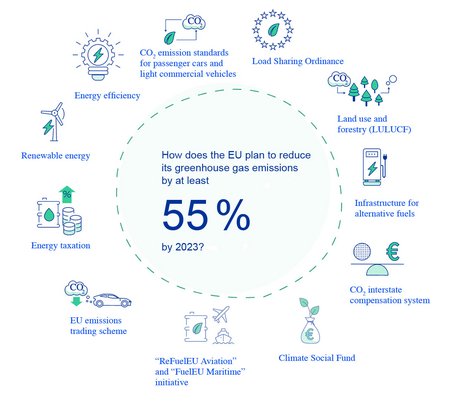 iStock / IR_Stone
iStock / IR_Stone
European Green Deal and social protection – first steps towards redressing socio-political injustices
The European Commission has therefore launched several initiatives on how to mitigate the impact of vulnerable groups.
ed* Nr. 01/2023 – Chapter 5
One example is its largest package of climate change legislation, the “Fit for 55” package.1 Among other things, it includes an initiative to establish a climate social fund. It is intended to offer Member States the possibility to support vulnerable citizens and micro-enterprises in investing in energy efficiency measures.2 Subsequently, in a Council Recommendation on Ensuring a Just Transition to Climate Neutrality3, Member States agreed that targeted transfer payments should be made to alleviate disproportionate financial burdens on vulnerable groups. No one in the EU should be left in the lurch during the transition.
“Fit for 55”: on the road to climate neutrality – implementing the EU’s 2030 climate target

Therefore, 86.7 billion euros are to be made available over a period of seven years for the refurbishment of buildings, access to zero and low-emission mobility, and income support.4 In this context, the aid from the Climate Social Fund will be supplemented by corresponding funds from the Member States. Member States also undertake to draw up climate social plans.5
“Fit for 55” also makes proposals for socially just tax and social welfare schemes. Thus, in view of the climate and environmental goals, the Member States are to shift the taxation of labour as well as reduce the tax and contribution burden for persons with low and middle incomes. However, social insurance, such as the statutory pension insurance, has narrow limits here. In order to preserve the equivalence principle, the close relationship between insured persons’ contributions and pension benefits must not be called into question.

